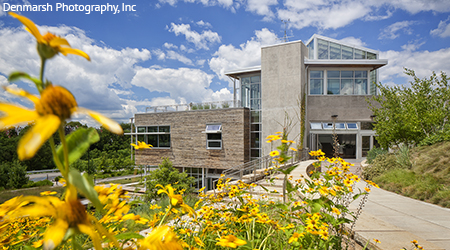Is There Really a Payback for Health and Wellness Strategies?
There's no monthly bill for or facility pain point if you don't focus on health and wellness. Or is there?
Facility managers focused on sustainability have usually included considerations of the impact of materials selection on the health and wellness of building occupants. This has been demonstrated by the growth in green cleaning programs. It is also seen in recent developments driven by market forces, such as the fact that the last batt of roll insulation made with formaldehyde came off the production line this past summer or in Kaiser Permanente banning the use of antimicrobial additives in its furnishings and coatings. Limiting toxic exposures remains a key strategy to pursue in commercial facilities, and there is even increased focus on materials selection, as in the latest version of LEED. At the same time, the conversation in the commercial real estate community regarding human health impacts is becoming more direct and comprehensive. Instead of merely trying to avoid making occupants sick, the current thinking is that buildings should also be designed and operated in a way that actively supports human health and wellness.
Wellness is a multidimensional metric, covering physical health as well as emotional, psychological, and social health. However, as the term pertains to the built environment currently, the majority of the focus is on physical health. There are many sensible, easily deployed solutions facility managers can adopt to improve the positive impact of their facilities on occupant health, as well as strategies that might have to wait for the next significant retrofit. The path to fostering wellness in the built environment is still in relatively early days, which means facility managers have an opportunity to join the conversation to develop solutions that work best for all parties involved.
Leadership in Wellness
But why should the facility’s impact on wellness matter to facility managers? After all, there’s no monthly bill, no facility’s pain point. Right? Well, not exactly. “The value proposition on the commercial side for healthier buildings is an outgrowth of the sustainability space, particularly with LEED as a driver for that for the last decade,” says Fernando Arias, director of strategic initiatives at the American Society of Interior Designers (ASID). ASID, along with partner organizations, has created a program of Health + Wellness Protocols to help inform decisions affecting occupant wellness. The initiative started as a 2014 Clinton Global Initiative Commitment to Action.
There is recognition in the marketplace that employee costs are the greatest cost to the business, far outstripping the costs to operate the physical building. This is tied up in salaries, healthcare reimbursements, and other benefits, and is also affected by things like worker productivity. “So in any way that we can address wellness in commercial buildings, we start to help employers reduce their overall costs from healthcare reimbursements, employees being disengaged, absenteeism, and ultimately productivity,” Arias says. That’s all still not exactly a line item in the facility’s budget, but if the function of facility management is to support the overall enterprise, then taking steps to improve wellness outcomes becomes a logical course of action.
This is an excerpt from a longer article on wellness strategies in the workplace.
Related Topics:












